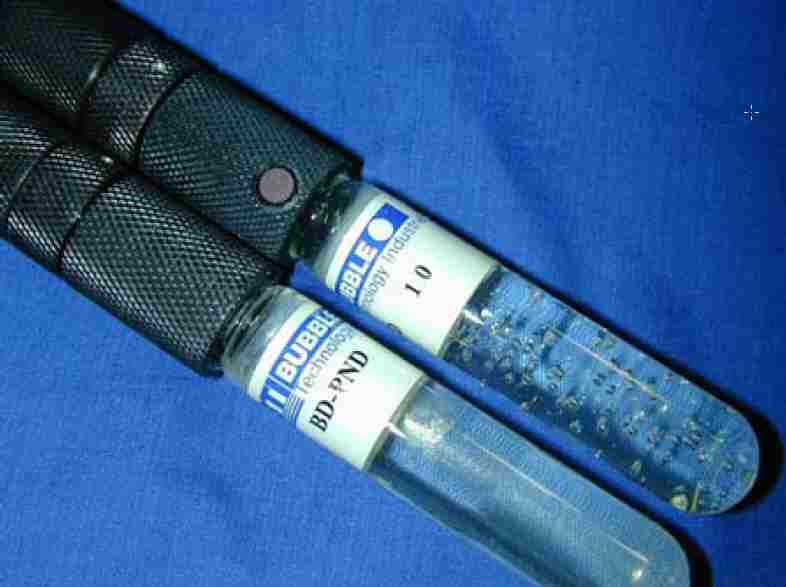Neutron Detectors: Bubble Detector
Overview
Bubble detectors consist of a clear plastic tube filled with a gel polymer. When fast neutrons are incident upon the polymer they superheat the polymer creating bubbles. These bubbles remain suspended in the gel and may be counted to determine neutron fluence or absorbed dose. Bubble chambers are able to measure both fast and, with the addition of a neutron absorber such as chlorine, thermal neutrons. Threshold bubble detectors are available allowing for limited spectrometry functions.
Advantages
- Useful for in treatment vault measurements.
- Good photon rejection
- Suitable for high dose rate
- No down time
- Small size
- Usable for personnel dosimetry
- Reusable
- Available in various energy ranges from thermal to fast.
Disadvantages
- May have strong temperature dependence (5% per C).
- This can be reduced by adding volatile liquid to the chamber whose vapor pressure compensates for temperature sensitivity.
- Bubble overlap makes readout difficult in high dose measurements.
- May loose sensitivity over time due to medium degradation.
Measurement
- Bubble detector cap is unscrewed reducing the chamber pressure and allowing measurement.
- Detector is exposed to neutrons. Neutron interactions superheat the polymer forming bubbles.
- Bubbles are counted either by eye or optically. The number of bubbles is correlated with fluence or absorbed dose.
- Bubble detector is reset by screwing down cap causing the internal pressure to increase.

